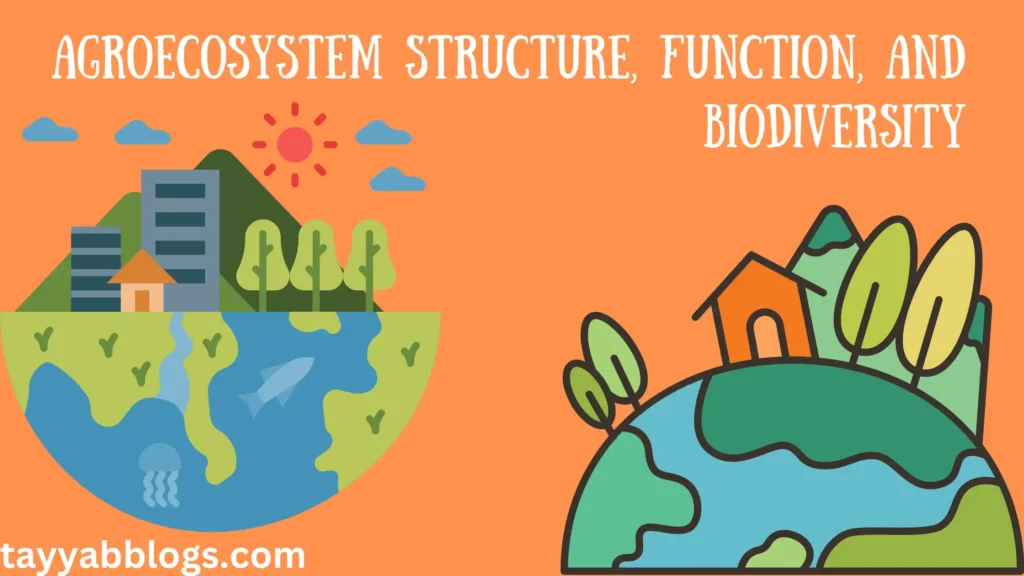Agricultural AGROECOSYSTEM Ecosystem Structure, Function and Biodiversity
The local context, which includes the interaction of ecological conditions (including biotic, geo- and chemical components) with economic needs, cultural and spiritual values of farmers, as well as social elements including social structure and technology, greatly influences the form and operation of an agricultural ecosystem.
There are two categories of agricultural biodiversity
1 For example, weeds, pests and diseases, pests, predators and parasites of insect organisms, and symbiotic and mutualistic species adapted to the environment created by the production system. Planned biodiversity refers to the specific crops and/or livestock that are planted and managed
The stability and predictability of agroecosystems can be improved by planned biodiversity and its companions. Agricultural practices that have been around for a while, including home gardens and shady coffee farms in the New and OK Work! Tropical regions and traditional Amish dairy farms in North America contain complex and diverse vertical structures as well as high levels of intentional and associated biodiversity.
EXAMPLE OF AGROECOSYSTEM
For example, areas with typical neotropical agroforestry systems may include more than 100 annual and perennial plant species. 141 Landscape patterns composed of small, diverse patches with multiple boundaries, habitat patches and corridors for wild biodiversity are produced by traditional agricultural ecosystems.
In contrast to traditional agricultural ecosystems. The vertical and horizontal organization of modern industrial agricultural ecosystems has largely been limited to monocultures, resulting in landscape patterns with severe genetic homogeneity including FC» boundaries, habitat areas and dispersal routes.
Cover Area country to country
For example, in the United States, 2–3 varieties are grown on 60–70% of total soybean acreage. Globally, the structure and operation of industrial livestock agriculture has a comparable detrimental effect on biodiversity, with four types of potato covering 72% of the area and three varieties of cotton covering 53% of the area.
Livestock operations are increasing for all main species, but especially for swine, poultry, beef and dairy. with feed given to animals in feedlots grown using monoculture. Even more extensive grazing operations displace natural forests and/or grasslands that historically supported very diverse plant populations, despite the fact that plant diversity can be improved with proper management.
Impact of off-site agricultural activities
The third major way agriculture impacts the world’s biodiversity is the direct and indirect off-site consequences of the many managements required to preserve their structure and function. Large-scale monocultures of annual species are incompatible with the biological dynamics of plant community succession .
As a result, substantial intervention is required to maintain a high level of production. Fertilizers used to increase agricultural plant production promote the growth of other plant species, especially invasive alien species, that have adapted to nutrient-rich environments. Crop plants and annual and perennial weeds cannot compete with each other if tillage, pesticides and genetic engineering are used.
Many monocultures of nutrient-rich plants provide an accessible resource for disease-causing microbes and insect pests. Crops can be protected from these competitors by insecticides, fungicides and genetic modification. Ahead. The sheer volume of external inputs delivered, along with soil disturbance and degradation of soil quality, often exceed the agricultural ecosystem’s capacity to absorb and digest the inputs, leaving traditional crop agricultural ecosystems famously leaky.
111 Intensive animal husbandry can also be an important cause of biological and chemical pollution. Many of these factors lead to sedimentation, excessive fertilisers, fertilizers and pesticides leaching into drains and groundwater. When combined with chemical and biological pollution, could hydrological changes to land and natural streams result in significant reductions in aquatic biodiversity that could affect entire watershed systems? Agriculture in the Mississippi River watershed has had a significant negative impact on aquatic biodiversity in the 18,000 km Hvpoxia in the Gulf of Mexico.
The worldwide spread of genetically modified crops raises a new issue on the off-site effects on biodiversity of contemporary agriculture. 111 Could a potential gene transfer that confers immunity to weeds, insects, fungi and viruses destroy natural populations and communities?
loss of diversity among agricultural species
Of the 7,000 crop species, less than 2% are now important. Wheat, rice and maize alone produce more than half of all plant-derived calories, with just 30 of them providing an estimated 90% of the world’s calories.
Around 30 animal species have been extensively used for agriculture globally. However, less than 14 kilo
The countries produce over 90% of the world’s cattle.
When 30% of domesticated animals around the world are at risk of extinction?
11 As more farmers use modern, high-yielding varieties, there is an increasing trend towards decreasing diversity within crop species and land diversity. 41 government policy recommendations have been made in response to these related developments, and their goals are to: 1) guarantee that existing agricultural genetic diversity of plants is preserved in seed banks and in situ plant and germplasm collections; 2) cultivate crops (in situ), especially wild relatives of major crops and animal breeds, in their native places; and 3) ensure that wild crop and livestock relatives are protected in carefully designated natural systems.
conclusion
Biodiversity as a Management Principle of Agricultural Ecosystems
There are promising examples of alternative agricultural practices that maintain and promote biodiversity while being highly productive, despite the fact that industrial agriculture is often negatively associated with biodiversity. • H| Some of them are: organic agriculture, sustainable agriculture, pea farming, and natural system agriculture being the first three. 5» comprehensive management; and Environmental Advocacy. These models were developed based on ecological concepts and the premise that biodiversity could increase dramatically
- YOU CAN VISIT OUR MOST OF WEBSITE : CLICK HERE 1
- YOU CAN VISIT OUR MOST OF WEBSITE : CLICK HERE 2

